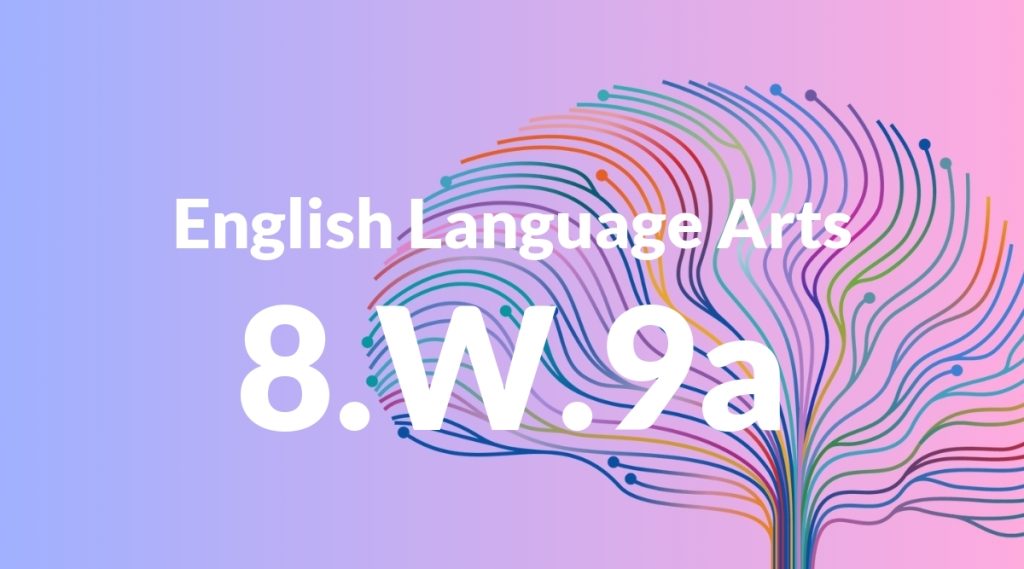Standard: 8.W.9a – Apply grade 8 Reading standards to literature (e.g., “Analyze how a modern work of fiction draws on themes, patterns of events, or character types from myths, traditional stories, or religious works such as the Bible, including describing how the material is rendered new”).
Grade level: Grade 8
Subject: English Language Arts
Domain: Writing
Teacher Overview
This standard focuses on helping students understand how modern literature is influenced by and draws upon themes, patterns, and character types from traditional stories, myths, and religious works. This skill is crucial for developing a deeper appreciation of literature and recognizing the interconnectedness of various literary traditions. Students should be familiar with basic literary elements and have prior knowledge of myths, traditional stories, and religious texts. This foundational understanding will enable them to identify and analyze the connections in modern literature.
By mastering this standard, students will be equipped to analyze and appreciate the depth and complexity of modern literature, understanding how it connects to and transforms traditional narratives.
Common Misconception 1
A common misconception is that modern works of fiction are entirely original and do not relate to older myths or traditional stories. This is incorrect because many modern stories are inspired by and incorporate elements from these older narratives.
Intervention 1
To address this misconception, teachers can use a variety of examples, such as showing how ‘The Matrix’ uses themes from Plato’s ‘Allegory of the Cave’ or how ‘Percy Jackson’ series is based on Greek mythology.
Common Misconception 2
Another misconception is that only direct retellings of traditional stories count as drawing on these themes. However, many modern works are influenced by traditional themes in more subtle ways.
Intervention 2
Teachers can clarify this by providing examples of works that are inspired by traditional themes without being direct retellings. For instance, discussing how ‘The Lion King’ is inspired by Shakespeare’s ‘Hamlet’ can illustrate this point.
Prerequisite Knowledge
Students should have a foundational understanding of basic literary elements such as themes, character types, and patterns of events. They should also be familiar with myths, traditional stories, and religious works.
Subsequent Knowledge
After mastering this standard, students will be able to critically analyze and compare various literary works, identifying how modern literature draws from and transforms traditional themes and archetypes.
Instructional Activities
- Comparative analysis essays
- Group discussions on mythological influences in popular books
- Creating storyboards that map modern stories to traditional patterns
- Research projects on the origins of character archetypes
- Interactive presentations on thematic connections in literature




